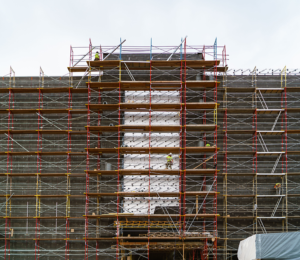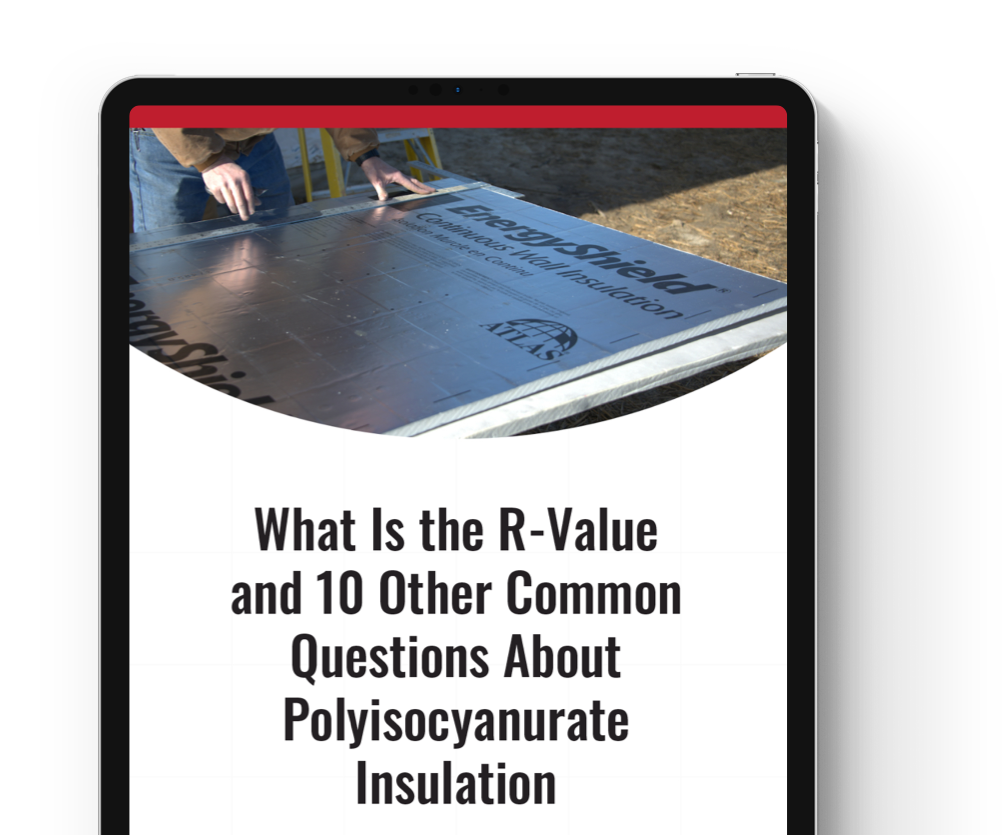Water can wreak havoc on buildings, and – without a proper water-resistant barrier (WRB) – structural damage can occur, compromising the building’s durability and longevity. While there are many types of water-resistant barriers to choose from, Atlas® EnergyShield products provide a WRB solution that not only protects structures but also offers the additional benefit of insulation, saving both time and money on the jobsite.
Protecting What’s Inside
Water-resistant barriers are vital components of exterior wall assemblies as they enable the structure to resist incidental water intrusion that may cause rot. A water-resistant barrier also helps prevent mold, which may adversely impact structural integrity and reduce indoor air quality. In fact, a suitable water-resistant barrier is the first step to ensuring the health and wellness of buildings and their occupants as mold growth can contribute to health complications – ranging from mild stuffy noses or itchy eyes to severe upper respiratory tract infections. This is especially important in high traffic outdoor areas areas like balconies, where waterproofing a balcony can be crucial to avoiding costly repairs.

Integration is Key for Time and Cost Savings
In addition to incorporating moisture resistance, a sensible wall assembly design should ensure occupant comfort. Most commonly used insulation solutions offer areasonable R-value for their price point, but few offer value-added benefits beyond that. Atlas EnergyShield® polyisocyanurate (polyiso) continuous wall insulation is innovative —it’s a high R-value insulation that can also serve as a water-resistant barrier.
When correctly treated at joints and penetrations, Atlas EnergyShield® continuous insulation prevents water intrusion at the outermost point possible, protecting the wall assembly by directing water away from structural elements. Using continuous wall insulation as a WRB is easy, and crews find it similar to installing traditional building wraps.
Additionally, the work can be performed by a variety of trades – varying from sheathing, insulation or waterproofing contractors, depending on the region. On the jobsite, interior work starts after the outside of the building is sealed (“dried-in”) from the elements. Using a multi-function product like EnergyShield continuous installation allows exterior work to be finished in less time, resulting in both material and labor cost savings.
Myth Busting
Polyiso does not absorb water as commonly believed. A white paper has been recently published by building scientist, Dr. Steven Doggett, that compares the absorbency of polyiso and mineral wool. Doggett’s test was based upon ASTM C209, submerging samples of foil and glass-faced polyiso and mineral wool, all commonly used as exterior insulation. Both the foil-faced and glass-faced polyiso samples performed exceptionally well, each in terms of absorption and drying.
Doggett’s test proved the effectiveness of polysio as a water-resistant barrier while raising questions about mineral wool’s performance in the presence of moisture.
The Use of Polyiso as a WRB Will Continue to Grow
As specifiers become more educated about the multiple benefits of those insulation solutions that feature water-resistant barriers, they will continue to increase in popularity, and help drive the decision to specify integrated wall products — including those with water-resistant barriers.
In addition to providing a cost saving from a materials point of view, as the skilled labor shortage continues to impact the construction industry, the use of integrated materials will provide more efficient and cost-effective installations.
Polyiso Creates Opportunity
Atlas EnergyShield products offer the highest R-value available of commonly used insulation products, up to R-6.5 per inch and serve as a water-resistant barrier.
The Atlas EnergyShield product line includes products that are NFPA (National Fire Protection Association) 285 compliant and are approved for more than three million assemblies. In addition, Atlas EnergyShield® products carry the coveted GREENGUARD Gold certification due to its low VOC (volatile organic compound) emissions and have zero ozone-depleting and greenhouse gases.

